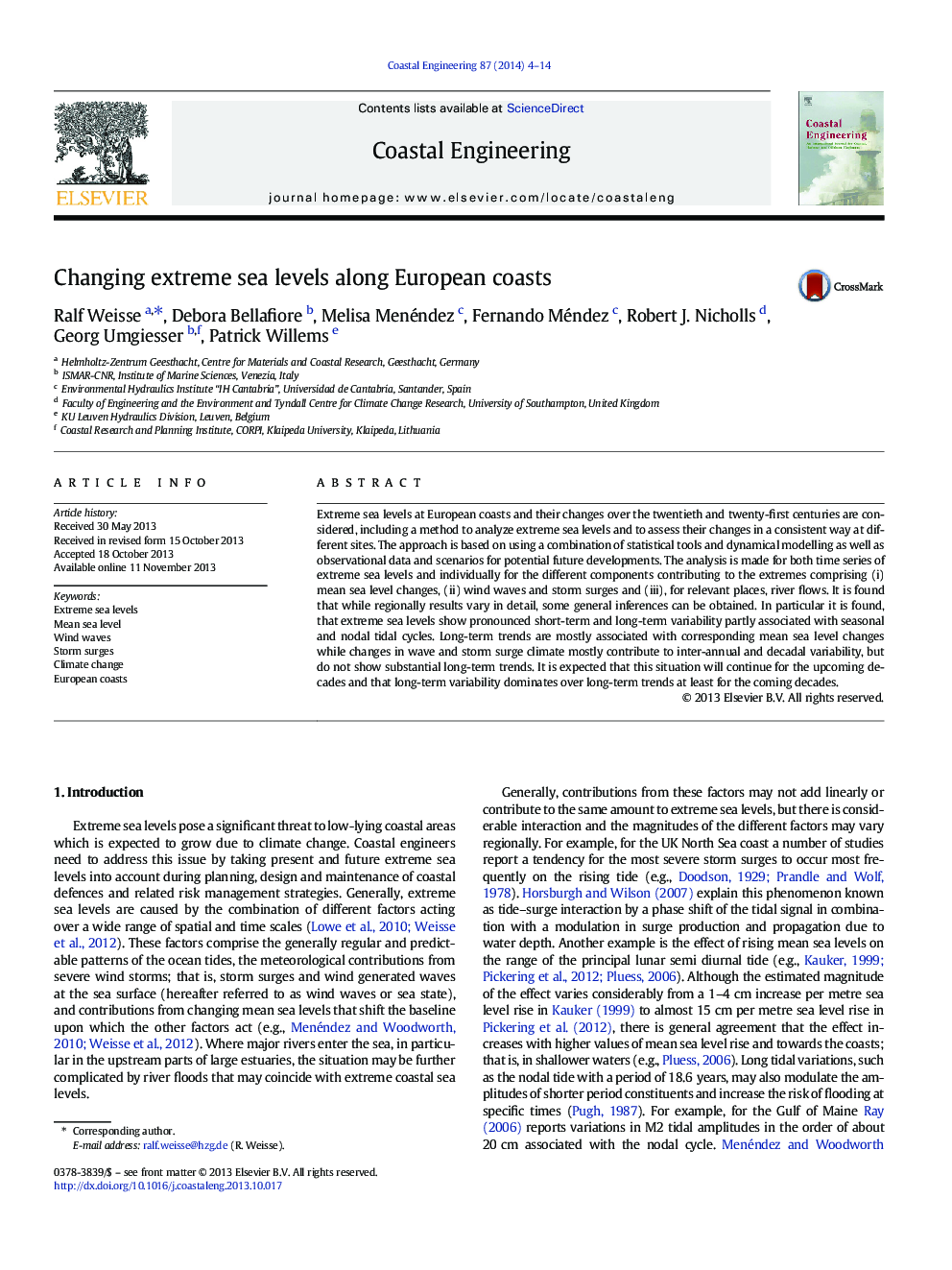| Article ID | Journal | Published Year | Pages | File Type |
|---|---|---|---|---|
| 1720820 | Coastal Engineering | 2014 | 11 Pages |
•Extreme sea levels show variability related to seasonal and nodal tidal cycles.•Long-term trends are mostly associated with corresponding mean sea level changes.•Waves and storm surge climate do not show substantial long-term trends.
Extreme sea levels at European coasts and their changes over the twentieth and twenty-first centuries are considered, including a method to analyze extreme sea levels and to assess their changes in a consistent way at different sites. The approach is based on using a combination of statistical tools and dynamical modelling as well as observational data and scenarios for potential future developments. The analysis is made for both time series of extreme sea levels and individually for the different components contributing to the extremes comprising (i) mean sea level changes, (ii) wind waves and storm surges and (iii), for relevant places, river flows. It is found that while regionally results vary in detail, some general inferences can be obtained. In particular it is found, that extreme sea levels show pronounced short-term and long-term variability partly associated with seasonal and nodal tidal cycles. Long-term trends are mostly associated with corresponding mean sea level changes while changes in wave and storm surge climate mostly contribute to inter-annual and decadal variability, but do not show substantial long-term trends. It is expected that this situation will continue for the upcoming decades and that long-term variability dominates over long-term trends at least for the coming decades.
